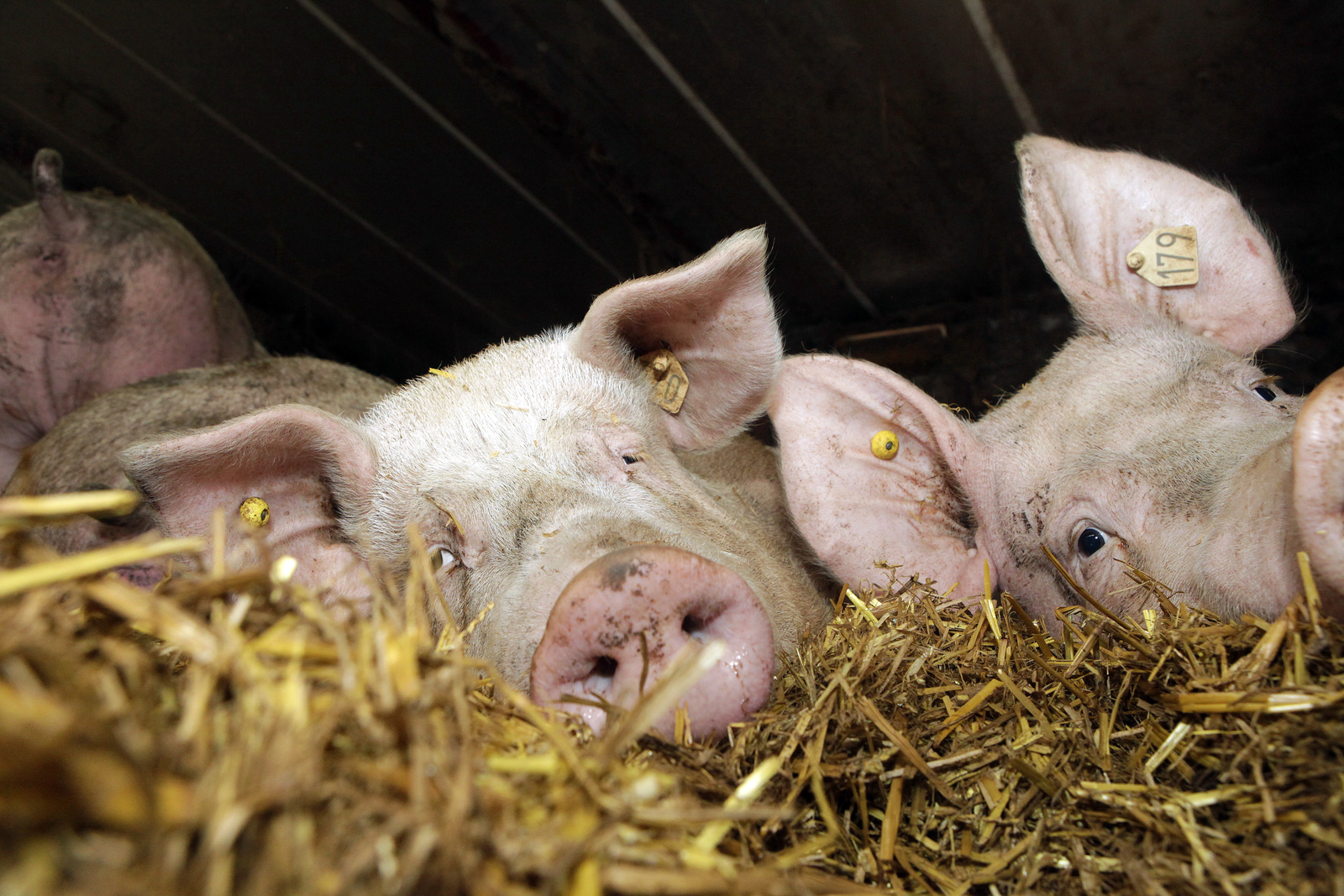Sows bedded on straw can be a big mycotoxin risk

Over recent years, the international pig industry has become more aware of the threats from mycotoxins and subsequently an understanding of the risks is increasing. In-feed risks are known, but straw is often overlooked.
By Katie Stephen, Optivite
The 2012 summer in the United Kingdom and elsewhere in Europe was the wettest in over 100 years and the harvest was considerably delayed. This resulted in ideal growing conditions for field moulds. Farmers throughout the UK and Europe are/ were at risk of mycotoxin contaminated feed and straw. A survey carried out by the UK’s Department of Environment, Food and Rural Affairs (Defra) was carried out prior to the harvest and reported that approxim-ately 97% of wheat samples displayed symptoms of fusarium head blight infection, typically seen as pink moulds developing on the standing crop.The fusarium toxins HT2 and T2 are produced by the same species and coexisted in 40% of the samples. Deoxynivalenol is very similar to trichothecenes which inhibit DNA synthesis in animals. For sow breeders consideration must be taken for the high zearalenone risk, as 85% of UK grains are/ were contaminated.
Impact on sows
Mycotoxins frequently occur simultaneously to produce synergistic toxicity. The mycotoxins of concern in breeding sows and their possible effects can be seen in the box. They are all metabolites from the fusarium mould species.
Mycotoxins are ubiquitous and impact performance at every level. Many mycotoxins are present at sub-clinical levels that have diverse effects on animal production from endocrine or immune responses to loss of appetite and uneven growth.
In sows, zearalenone is an important mycotoxin to consider as it mimics oestrogen which results in hyper-oestrogenism and reduced fertility. If this is the case and the numbers of sow returns are high, this will be an expensive consequence; the British Pig Executive have reported that each 21 day return will cost £50 (almost €60).
Straw is a serious risk
Wet harvests inevitably result in poorer quality straw as well as less being available; in many cases it is visibly mouldy. And, although it is advisable to discard mouldy straw, it is highly likely that some mouldy straw will still be used and unfortunately straw can contain high levels of fusarium mycotoxins.
A review carried out at Harper Adams University, UK, after the 2008 harvest concluded that wheat and barley straw can be a serious mycotoxin risk, with straw containing higher mycotoxin levels than grains in many samples.
There is limited data on the rate of consumption of straw bedding, however one study calculated weaned pigs consumed around 1.6 kg per day and therefore it is safe to assume this could be higher in sows. Based on the levels of zearalenone found in straw, this could potentially be very serious.
Furthermore, storage mycotoxins are more likely to occur in baled straw post-harvest, as unlike grains, straw is less likely to be stored in weather proofed sheds. Storage moulds include aspergillus and penicillium which are the moulds that produce the mycotoxins ochratoxin and to a lesser extent aflatoxin in the UK. Nonetheless, aflatoxins can still potentially occur in the UK if the weather is favourable; warm and humid. Aflatoxins are the most acutely toxic of all mycotoxins to pigs, causing extensive liver damage.
Visibility
Sometimes moulds can be seen clearly in straw, dark grey in colour and the straw can be dusty. However, moulds are not always visible so it is not safe to assume all moulds can be seen in straw. If straw has been harvested and baled after rainfall, it can be contaminated by rain splashes containing mould spores from the soil.
Unlike grains however, straw can be left in the field for longer periods and ultimately the conditions can be favourable for storage moulds to develop. It is common practice to treat new harvest grains with an acid based preservative yet this is not the case with straw, leaving it with no protection from moulds developing throughout the year. Unfavourable storage conditions, such as storing under a tarpaulin which can cause sweating and condensation or poor stacking can increase the risk. To reduce the risk of mycotoxins using a mycotoxin binder is suggested.
Optivite’s Ultrabond has a very high binding capacity for a broad spectrum of mycotoxins per gramme of product, it does not interfere with veterinary therapies, vaccines and anticoccidials, it will also not trap vitamins or other nutrients and it is effective throughout the digestive system. Bioflavonoids are also included, which are powerful natural antioxidants to assist with the detoxification process, aiding health and liver function.
Source: Pig Progress magazine volumn 29 number 9. 2013
Symptoms of mycotoxins in sows
Zearalenone
Oestrogenic effects. Reproductive problems; vulvo-vaginitis; rectal prolapse; embryo mortality; reduced litter size/ weight, weak piglets at birth; swelling and reddening of vulva; infertility; abortion; immune suppression; enlargement of mammary glands.
Deoxynivalenol (vomitoxin)
Reduced feed consumption; weight loss; vomiting; immune suppressive; inhibit protein synthesis; diarrhoea; reproductive failure; gastro-intestinal tract irritation.
Trichothecene (T2 Toxin & HT2 Toxin)
Reduced feed consumption; weight loss; vomiting; immune suppressive; inhibit protein synthesis; oral irritation; haemorrhages; diarrhoea; gastro-intestinal tract irritations.
Fumonisin
Reduced feed consumption; reduced performance; porcine pulmonary oedema; hepatic cancer; paralysis; immune suppression; acute respiratory failure.











